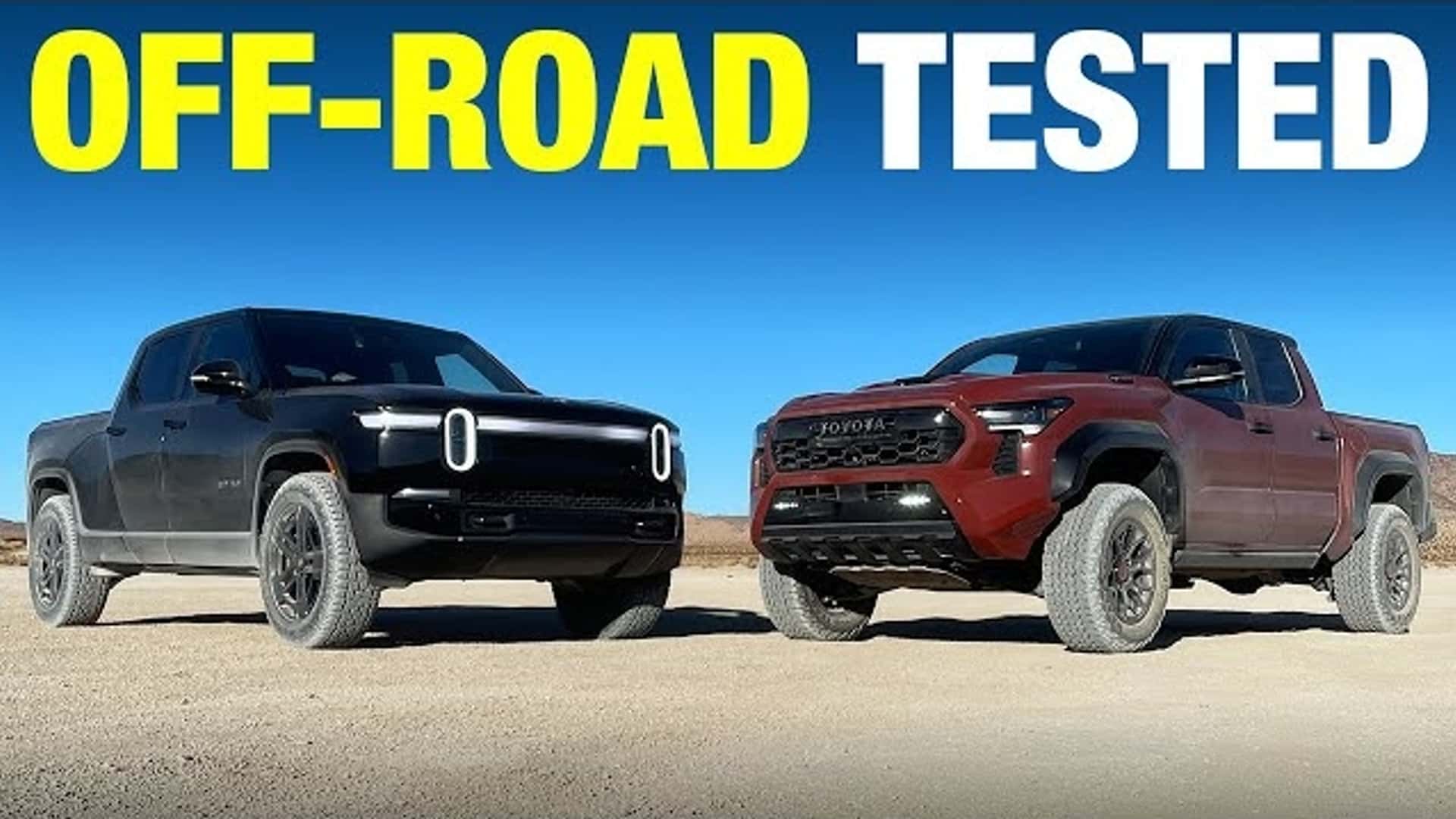
The Rivian R1T is an electric-powered vehicle that heavily relies on technology for functionality. In contrast, the Toyota Tacoma is a key driven, hands-on, mechanical off-road vehicle. Which one is better equipped to handle rough terrain and harsh conditions?
- The Rivian R1T and hybrid Toyota Tacoma TRD Pro are both formidable off-road-capable vehicles.
- The R1T has adaptive dampeners, dual electric motors producing over 800 pound-feet of torque, and a clever traction system.
- The hybrid Tacoma is rough and unrefined, with well-established off-road capabilities to tackle the most difficult terrain.
Rivian claims that the R1T can navigate rocky terrain, traverse snowy tracks, and keep moving through sandy conditions and ultimately reach your destination. But how does it stack up when put to the test against a well-established hybrid off-road capable vehicle in real-world scenarios?
Recently, the truck was pitted against the hybrid Toyota Tacoma TRD Pro in a head-to-head competition to determine which vehicle would achieve the greatest distance in an off-road environment. The team took both trucks to Johnson Valley in Southern California to put them through their paces.
The dual-motor R1T with its 149 kWh Max battery pack was built for the task: "The R1T was the dual-motor version with the 149 kilowatt-hour Max battery pack. While it seems capable on paper with 533 horsepower and over 800 pound-feet of torque, off-roading requires more than that. Crazy torque figures won't cut it. Its off-road chops include adaptive air suspension, a trick hydraulic suspension, high approach and departure angles, off-road tires, brake torque vectoring and a bunch of drive modes that adjust traction and suspension settings."
The Tacoma has a more mechanical design. Its 2.4-liter, four-cylinder, turbo-charged engine produces 326 hp and 465 lb-ft of torque. Unlike the R1T, the Tacoma uses a body-on-frame construction. This design is typically better suited for rugged terrain, as it has inherent rigidity. The Tacoma also features a locking rear differential, solid rear axle, a disconnecting sway bar at the front, a 4x4 transfer case, and off-road-tuned Fox shocks.
In the hill climb test, the R1T struggled to overcome the steepest section despite its exceptionally powerful electric motors. Rivian's brake torque vectoring system helps by channeling power to the wheels with the most grip and cutting it to the ones slipping – unfortunately, this did not prove sufficient to conquer this particular section. Brake torque vectoring primarily prevents wheels from over-rotating when they lose traction – it does not divert unproductive torque to wheels that are still on the road.
The Tacoma performed well in the hill climb due to its rear differential, which enabled both rear wheels to rotate together and distribute power more efficiently. Its disconnecting sway bar allowed the frontend axle to move freely, making it easier for the truck to navigate over rocks by enabling it to adapt to the terrain pattern.
The Rivian performed optimally in the sand. Its excess power and torque showcased themselves without the traction control being overbearing. The section of sand had a bumpy terrain, which a body-on-frame construction typically copes with better, as it can better absorb, distribute, and dissipate those harsh impacts, especially at high speeds.
That last aspect also makes the R1T more comfortable and smoother on the road, at least in those areas. That's not to say it's not suited for off-road, but the Tacoma's mechanical setup seems better fitted for slow-speed inclines and rocky terrain crawls.
These multiple axle types would give its EVs a clear advantage over its non-electric rival. Scout has stated that its electric vehicles will feature a rigid rear axle similar to that of the Tacoma, accompanied by locking differentials in both the front and rear, which would establish them as genuine off-road vehicles, at least based on their specifications.
The video above is worth watching since it will help you comprehend the current limitations of the dual-motor R1T and what Rivian can do in order to enhance its upcoming revisions.
Have a suggestion or feedback? Reach out to the author:
More EV News
- Elon Musk Teasing Discounts On Upcoming Tesla Cybertruck
- For Sale, Maybe Possible: A Six-Wheel Van That Transitions into a Flying Vehicle.
- Don't Attempt to Sabotage ChargePoint's New Cables
- 24 Electric Vehicles Were Driven for Hours in Extremely Cold Weather Until Their Batteries Died. One Model Performed Exceptionally Well
